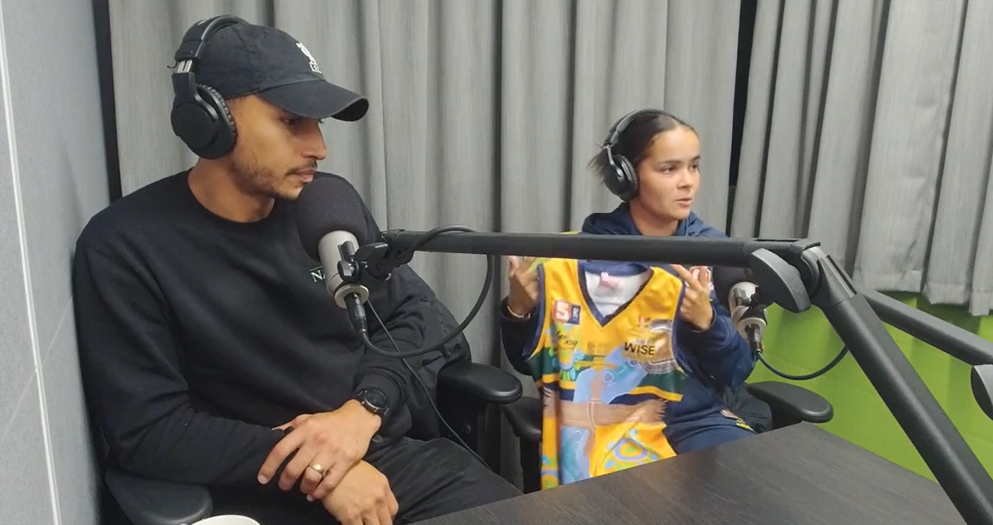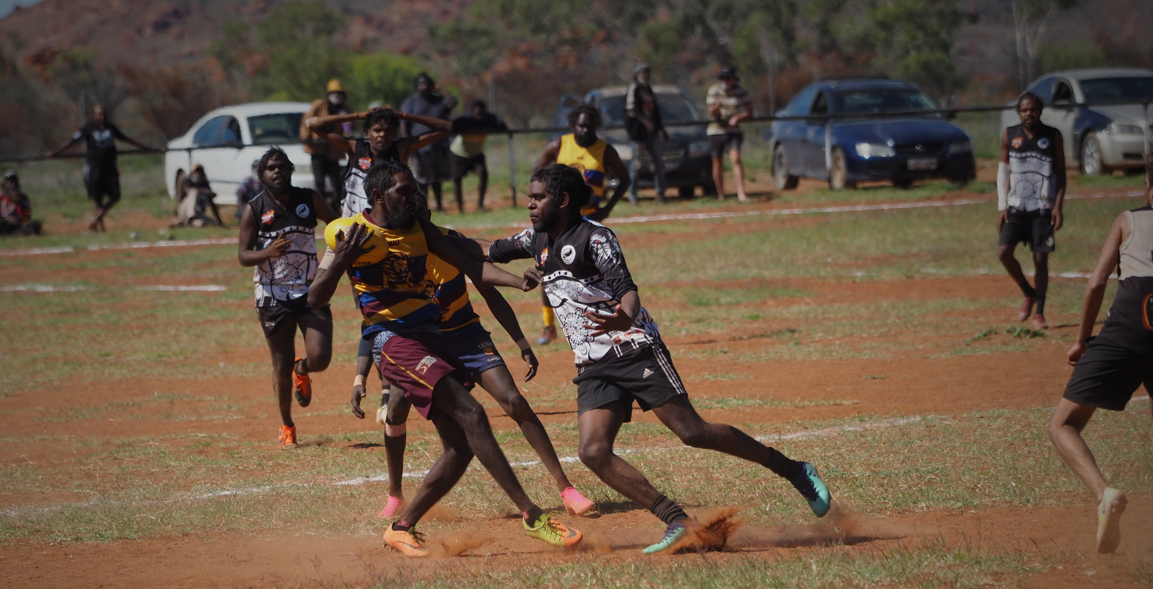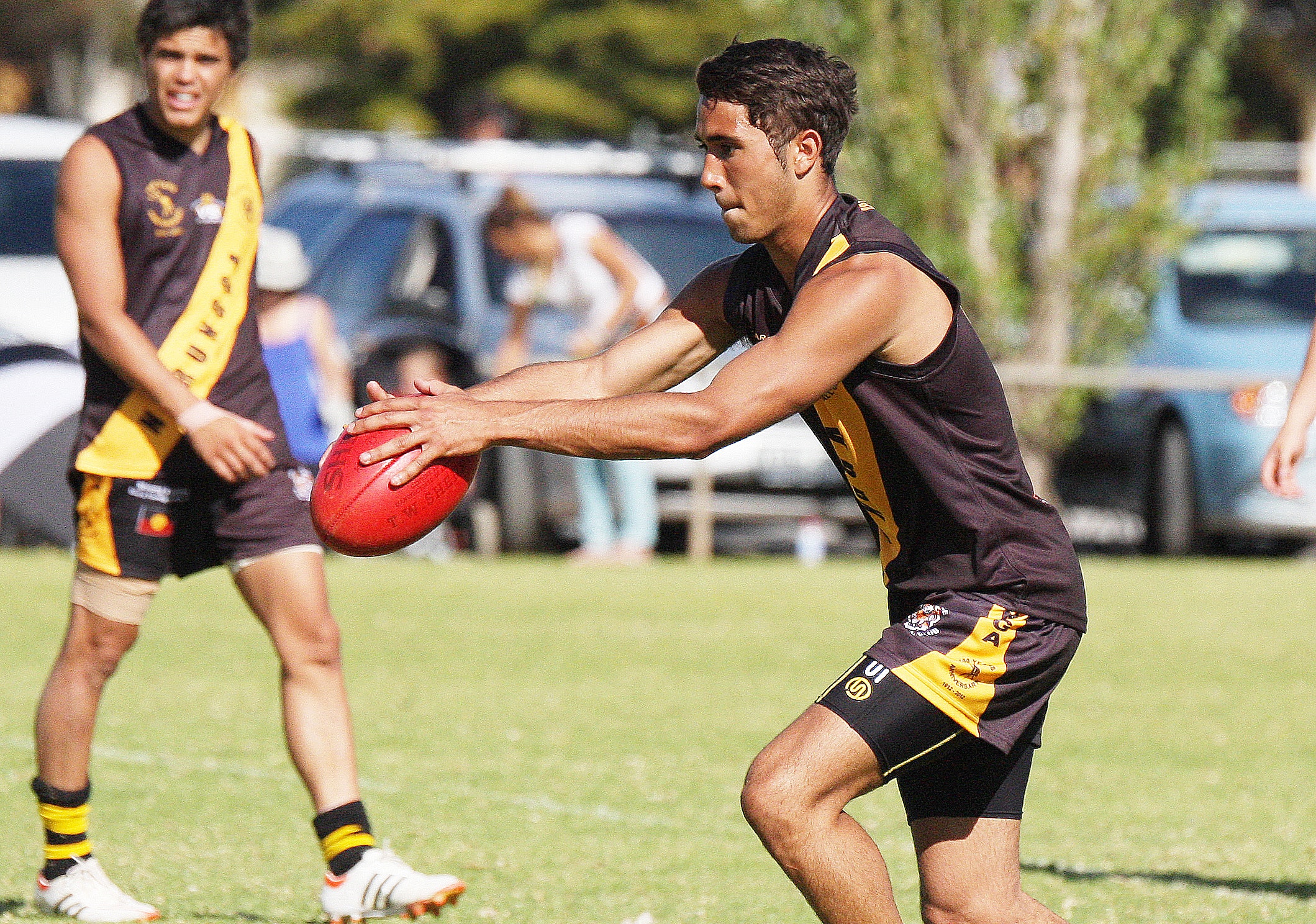
YP football’s rich Indigenous history
Malcolm Karpany playing for the Narungga team in the SA Aboriginal Championships in 2012. Photo: Peter Argent
Ahead of SANFL Indigenous Round, and the upcoming inaugural Yorke Peninsula Football League Indigenous game between CMS Crows and Central Yorke Cougars in August, Peter Argent looks at some of the illustrious Indigenous football names from the region.
Over more than a century, there have been many outstanding indigenous achievements across the football landscape on the Yorke Peninsula.
This century, exciting Aboriginal talents Eddie Sansbury and Malcolm Karpany have been drafted into AFL ranks after starting their football journeys on the ‘leg’.
Karpany, whose foundation club is Moonta where he is currently playing, won an Alan Stewart Medal as best on ground in the SANFL under 18s Grand Final and played League football for Woodville West Torrens, before being taken by the West Coast Eagles.
A junior at Arthurton and Stansbury, Eddie Sansbury was a key member of three Central District SANFL League premiership triumphs.
In his first against West Adelaide in 2003, Sansbury kicked five goals in a 34-point win, whilst also being a member of the 2009 and 2010 Premiership teams.
Between 2004 and 2008 he played 40 senior games with the Roos and also in a North Ballarat VFL flag in 2008.
A Norm Russell Medal in 2011 (Central District’s best and fairest), further success was enjoyed by Sansbury post his SANFL days with the Aspley Hornets (NEAFL) and the Wanderers (Northern Territory FL).
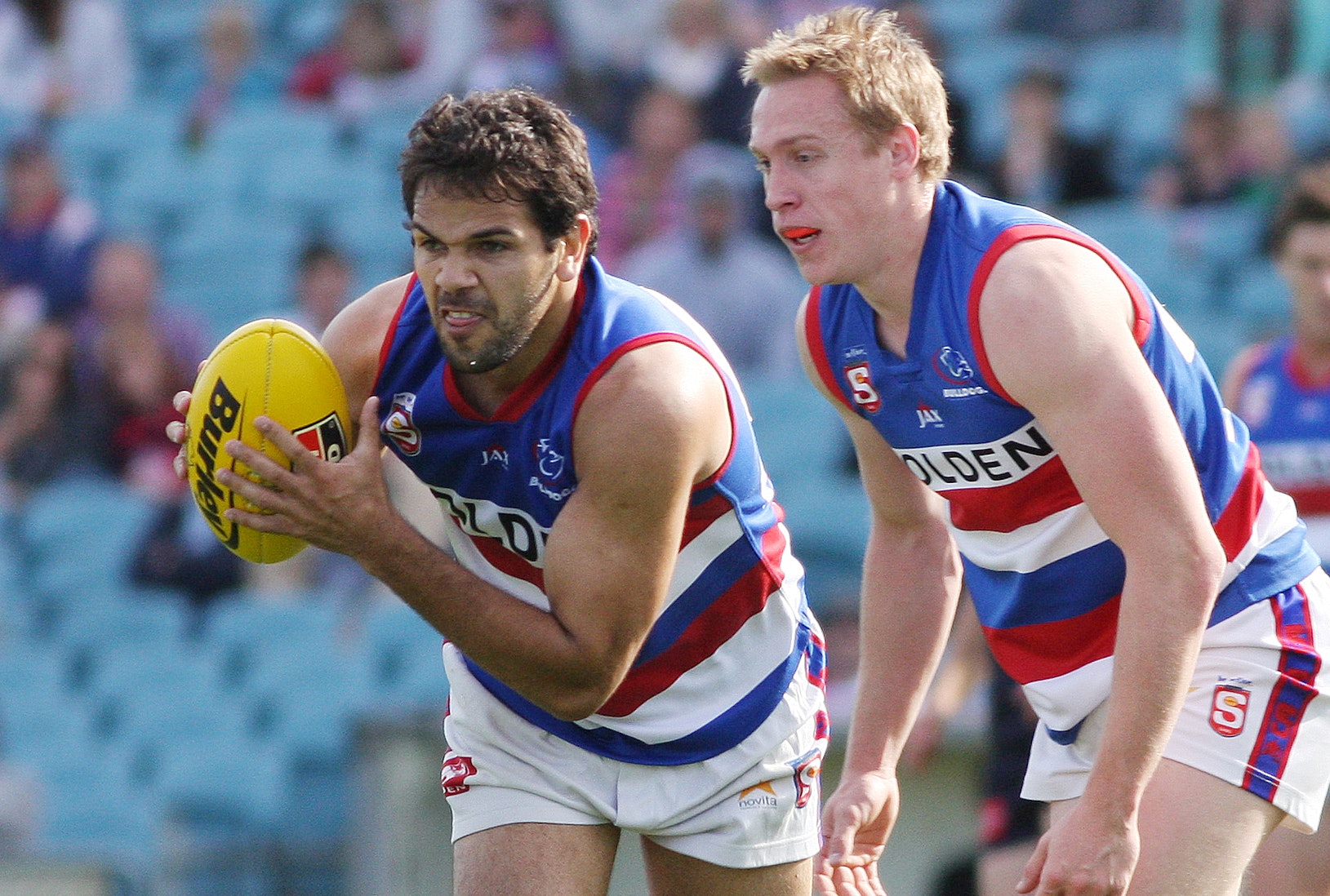
Edward Sansbury playing for Central District. Photo: Peter Argent
From a local perspective, Derek Wanganeen came across to the CMS Crows, after being on Hawthorn’s list and playing League football for Port, to win the 2017 Mail Medal.
In the Stansbury Roos’ final two flags in the South Yorke Peninsula competition in 1984 and 1988, there was a strong connection with Aboriginal players at Port Pearce.
After contact with Stansbury coach Greg Germain and senior player Tim Vince, who was shearing at Port Pearce, a cohort of Narungga Aboriginal footballers from the Port Pearce mission town, travelled across the leg to play for the Stansbury Football Club in 1983. Among them were Klynton “Kandy” Wanganeen, his cousin Cyril “Bigzie” Kartinyeri, Kym Sansbury, Denis Gray and Clem Graham.
Stansbury won its first A grade premiership in 31 years in 1984, defeating its nemesis from the previous season Curramulka by 39 points (18.11 to 11.14) in a Grand Final replay.
Joining “Kandy” and “Bigzie” in the premiership winning team was a cousin, Wayne Newchurch.
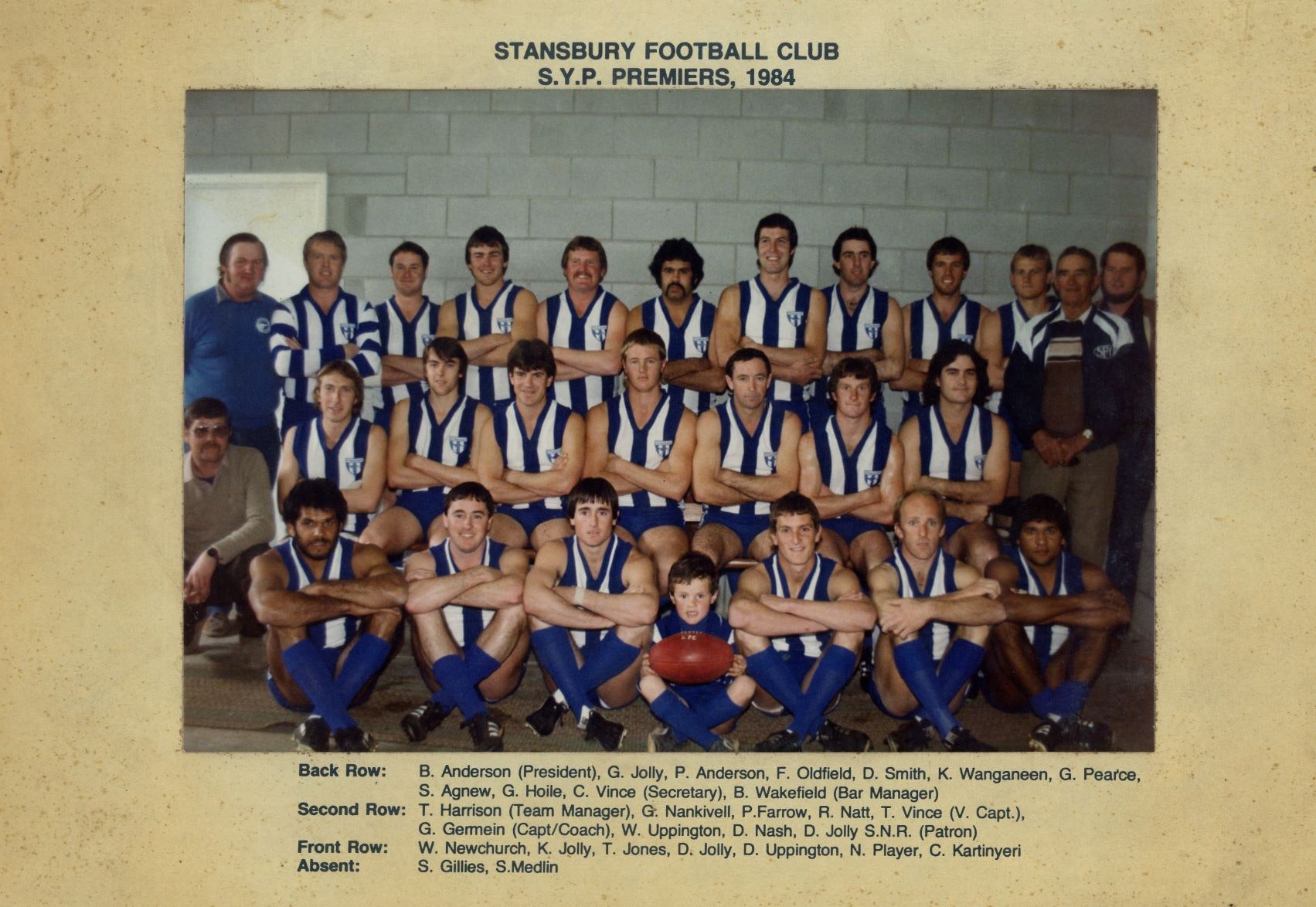
Both Wanganeen and Kartinyeri also were members of the Stansbury final flag-winning team in 1988 when the Roos defeated Edithburgh by 39 points.
A couple of decades early, a child of the stolen generation, Elkin Reilly, had an impact for Minlaton across three years after his schooling at Rostrevor College.
Reilly – taught about the finer points of the game by another champion of the epoch, former Sturt player Hedley Freundt – won the Minlaton club’s best and fairest and shared the competition’s top honour with Western Districts John Lennell, both receiving 20 votes in 1959.
Reilly, with Curramulka Indigenous icon of the era Vince Copley, also played in the special clash for the Southern Yorke Peninsula representative side against SANFL giants Port Adelaide at Yorketown during June, 1958.
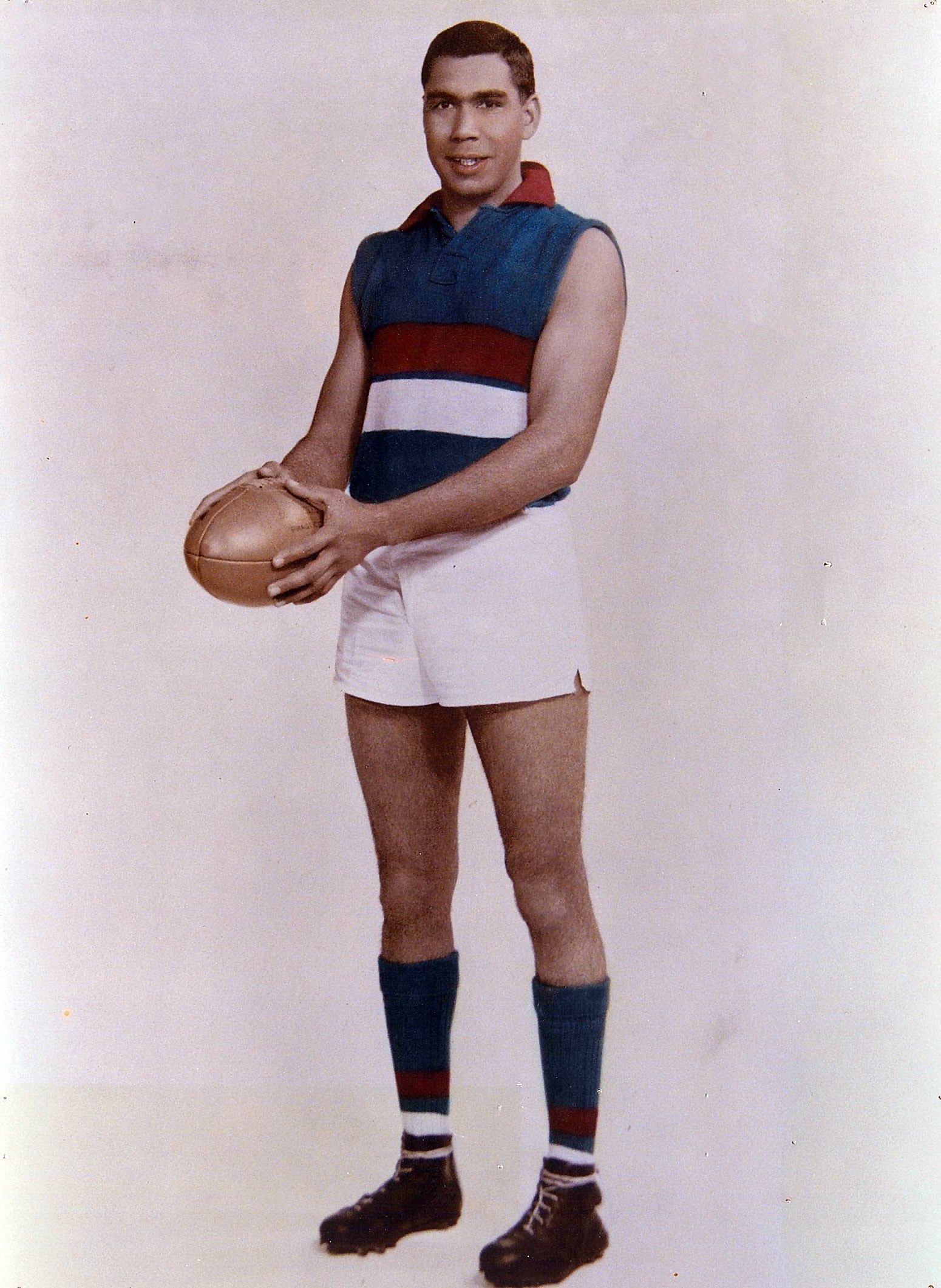
Minlaton’s Elkin Reilly, Mail Medallist in 1959.
A Port Adelaide footballer, Copley arrived in 1953 and became a legend of the Curramulka Magpies and the league, playing in no less than eight A grade flags.
Adding to his amazing achievements, Copley became the first known Aboriginal player to coach a rural A-grade football team in South Australia.
An Elder of the Ngadjuri people in South Australia, as a teenager he went out to the famous Port Adelaide Football Club and won the prestigious SANFL Tomkins Medal for the fairest and most brilliant player in the Senior Colts (SANFL Under 19) competition.
“In the 1954 season I first became involved with the Curramulka community and was immediately accepted by everyone,” Copley explained.
“The first night I was in town, Peter Tilbrook invited me out to a dance and I was instantly welcomed into this special community.
“I was only going to stay for a year, but 14 years later I was still playing.
“There was a couple years as captain-coach of Yorketown (‘67-68) after ‘Sparks’ Harris convince me to go across and coach them.
“I also became the youngest (and the first in SA) Aboriginal coach of a predominantly white football team in 1957.”
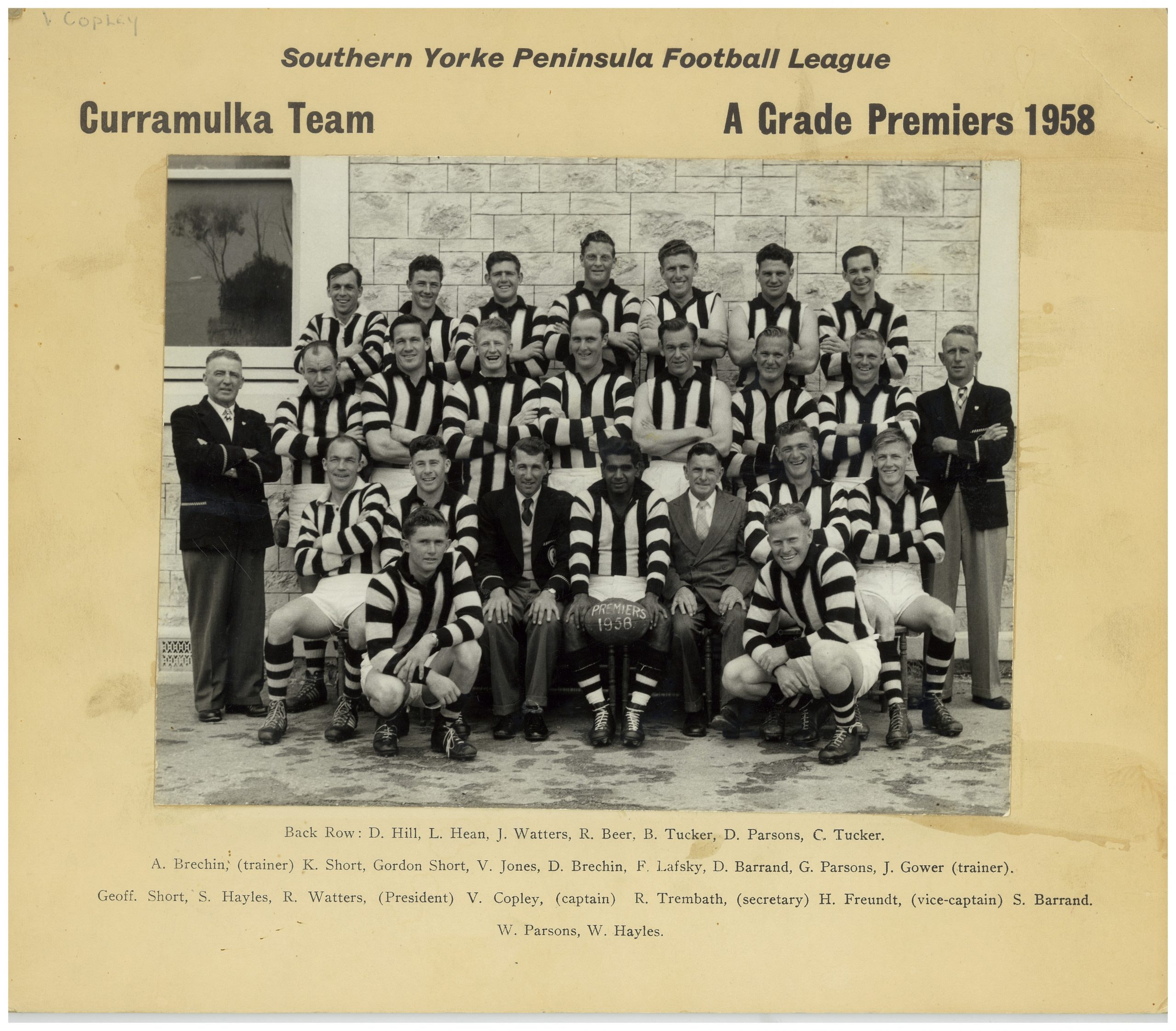
Vince Copley (front, centre) was a legend of the Curramulka Magpies.
In the neighbouring Yorke Valley Football League (YVFL), perhaps the most mercurial footballer during the 1950s was Keith Warrior.
Three times during that decade Warrior won the YVFL’s highest individual honour – in 1952, 1954 (when officials gave him 31 votes across the minor round) and 1955 when he shared the Medal with Arthurton’s Vic Serotzki on 26 votes.
A railways employee, the superbly skilled left-footed centreman moved to the North Eastern competition, winning a further two Mail Medals with Hallett.
In the YVFL, the Point Pearce Tigers – a fully Indigenous team – started back in 1910, winning an inaugural flag when they defeated Maitland by six points in 1912. They went on to win premierships two years later and in the first two seasons after World War I, 1919 and 1920. There were Grand Final appearances in 1925 and again in back-to-back season deciders in 1932-33 when they went down to Maitland.
They also dominated immediately after World War II, playing in three consecutive Grand Finals, winning the 1946 and 1948 flags. Another title came in 1953, after last-day-of-the-season defeats over the previous three winters. And three more crowns came in 1957, ‘58 and ‘60, with the club folding after the 1962 season.
The winner of Point Pearce’s final best and fairest award in 1962, Michael Wanganeen, had an extensive playing career and also etched his name into national Aboriginal football fraternity from a coaching perspective.
In 1983, he coached the first ever Aboriginal All-Stars team, full of iconic names of the era like Stephen Michael, Michael Graham, Wilbur Wilson, Maurice Rioli, Greg McAdam, Krackour brothers Jimmy and Phil, along with Phil Egan.
In a goal kicking feast, Wanganeen’s All-Stars side defeated Richmond/Mildura 37.11 (233) to 14.11 (95) at Sarah Oval in Mildura in early October.
Fittingly, an inaugural YPFL Indigenous game between CMS Crows and Central Yorke Cougars will be played on August 7 (Round 15) at Minlaton Oval, with the Best on Ground player to receive the Michael Wanganeen Medal.
Related News
-
 Multicultural
MulticulturalEmerging SANFLW stars to feature in Indigenous and Multicultural Academies
-
 First Nations
First Nations2025 First Nations Round Guernsey Designs
-
 First Nations
First NationsStrong SANFL connection at 2025 AFL Indigenous All-Stars match
-
 First Nations
First NationsSANFL Juniors to celebrate NAIDOC Week with First Nations Round
-
 Checkside Chats
Checkside ChatsCheckside Chats with Marlon Motlop and Channi Mitchell
-
 First Nations
First Nations2024 First Nations Round Guernsey Designs
-
 First Nations
First NationsThe People’s Champion – Sonny Morey
-
 First Nations
First Nations2024 SANFL APY League ready for kickoff





